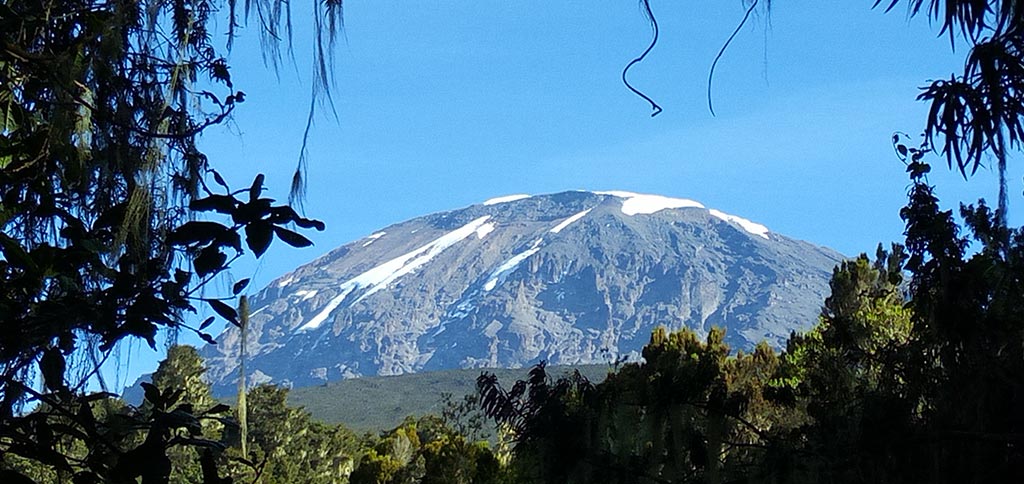
Climbing Mount Kilimanjaro
Arusha, Tanzania, 2019-Apr-02 — /Travel PR News/ — Tips for successful climbing Mount Kilimanjaro, brought to you by Kilimanjaro Tanzanite Safaris Ltd.
A – Mental and physical preparation: Prepare psychologically and be positive that you can. If you work in office regularly, spare some time for gym exercise to stretch muscles and increase lung capacity to breath.
B – prepare packing list and trekking gears
C – Best time to go climb Kilimanjaro, June to October have favorite dry season, no rain…Hiking Kilimanjaro begin from nature forest, hence weather should be summer or dry season without being too wet.
D – Choose Kilimanjaro route which shows you most beautiful Kilimanjaro feature
E – Trekking cost include permit entry fee for Tanzania government, Guides and mountain crews, accommodation equipment like tents, mattresses, food, ground travel services like transportation, VAT tax, Emergency mountain evacuation insurance and tips/gratitude. All these costs markup general travel adventure package for Mount Kilimanjaro trip booking.
G – Tips include methods to Acclimatize and avoid altitude sickness for climbing Kilimanjaro. Climbers are happy to hike up and walk down at Machame or Lemosho route, best way to acclimatize.
Altitude sickness is also known as Mountain illness, if this happen you will not be happy and symptoms prevent you from hiking continuing. So you will not accomplish your goal to trek and summit Kilimanjaro. Below are some travel tips and skills to follow:
i – Make sure you climb slowly- pole pole
Hike slowly so that lungs get time to breath and avoid abrupt change of altitude
Below are things you can do to prevent Altitude sickness as you prepare for Kilimanjaro success summit. Most important is trekking slowly – pole pole. Take the longest route (Machame 7 days) or Lemosho 8 days or Northern circuit through Londorosi. By giving your body more time to acclimate and minimizing your efforts, you will reduce the risk of getting Mountain illness.
ii – Importance of drinking enough water usually minimum is 3 litres per day
As you acclimate to higher altitudes and a more arid environment, your body loses water which can quickly lead to dehydration. Therefore, drinking plenty of water is one of the most important ways to help your body adjust to higher altitudes. As a general rule, you want to drink about twice as much water at high altitudes than you do at home. If you drink enough water every evening, meaning you do not need to carry too much water on your daily backpack, then you can carry 2 liters and reduce weight.
iii – Mountain menu, Kilimanjaro recommended diet food
At higher altitudes, your body needs a diet that may be quite different than what you eat at home.
Complex Carbohydrates. Foods that are high in complex carbohydrates will help maintain your energy level and improve your body’s ability to absorb oxygen at higher elevations. Unlike simple carbohydrates like white bread, white rice, and baked goods, complex carbohydrates are rich in vitamins, minerals, and antioxidants. Select foods like oatmeal, brown rice, sweet potatoes, squash, and beans.
Potassium. Foods that are rich in potassium will help you replenish your electrolytes by balancing salt intake, so slice a banana into your oatmeal at breakfast, select a side of broccoli instead of fries at lunch, and add avocado to your bean burrito at dinner.
Pro Tip: A condition called hyponatremia can occur when you’ve had too much water without replenishing electrolytes or eating salts. If you’ve had plenty of water but begin experiencing nausea, muscle cramps, or disorientation, especially while exercising, have a salty snack like trail mix with nuts and dried fruits like raisins which are also high in iron. In Tanzania you get Cashew nuts and Groundnuts, provided by our chef daily morning.
Increase your Iron. Iron is needed to create hemoglobin, the protein used by red blood cells to deliver oxygen to your body. When traveling to high altitudes, increase your iron intake with supplements or iron-rich foods like red meat, beans, peas, and dark, leafy greens like Swiss chard, spinach.
iv – Drinks to take
Avoid Beer or Caffeine drinks, diuretics like alcoholic and caffeinated beverages drain your body water. You can celebrate with drinks during descending on last day or in the Hotel after complete summit climbing.
Additional information is Hotels near Mount Kilimanjaro available. Usually Accommodation at slopes of Mount Kilimanjaro are located in Boma Ng’ombe and Moshi town. There are budget hotels, moderate luxury hotels and luxury hotels .
Safety climbing: There is Emergency Evacuation Insurance cover offered by AMREF Flying Doctors, you should get it, By Tour Operator…Evacuation done by Helicopter ready set at Slopes of Mount Kilimanjaro in Moshi town or Nairobi.
NEW DELHI, 2025-Jan-22 — /Travel PR News/ — Agra, the city of the magnificent Taj… Read More
(IN SHORT) Radisson Blu Hotel, Bengaluru Outer Ring Road has achieved a significant sustainability milestone… Read More
(IN SHORT) Radisson Collection has launched its first resort in Sri Lanka, a luxurious beachfront… Read More
(IN SHORT) The ASEAN Explorer Pass by AirAsia MOVE was featured at the 2025 ASEAN… Read More
(IN SHORT) Abc. (AirAsia brand co.) and American Tourister have launched "The Funseekers Collection," a… Read More
Strategic partnership will foster supply of sustainable aviation fuel in the Nordics to help meet… Read More
This website uses cookies.